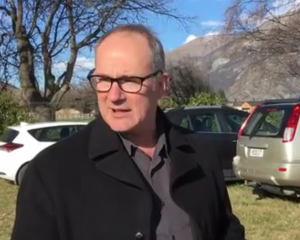The New Zealand Transport Agency is prepared to pay at least this sum while it deliberates what it might cost to design and build a new structure.
A decision on replacing the bridge may be on the backburner because a hydro dam could be built downstream from Beaumont, flooding the Beaumont Valley.
Contact Energy hydro projects manager Neil Gillespie said the company had not been in consultation with the NZTA about any future structure which might replace the Beaumont Bridge.
If Contact built a dam at Tuapeka Mouth, it could affect the bridge site and State Highway 8 through the area.
Mr Gillespie said Contact had always acknowledged it would have to provide mitigation measures, once a decision was made about the future of any possible hydro scheme.
Over the past five years, about $1.29 million has been spent by the NZTA as it tries to extend the life of the run-down, ageing structure.
The SH8 bridge has been back in the headlines after the NZTA recently denied the structure was unsafe after Waitaki deputy mayor Jim Hopkins questioned whether several safety features were put in place to stop it collapsing.
NZTA southern region director Jim Harland told members of the Otago Regional Council's (ORC) transport committee the bridge was not in danger of falling down.
It was preferable to replace the bridge and the NZTA was still considering its options about when that might happen, Mr Harland said.
NZTA Otago-Southland operations manager Roger Bailey said forecast expenditure to maintain the bridge might vary.
About $28,000 is forecast to be spent each year to maintain scaffolding on the bridge, set up to carry out regular monitoring, structural inspections, testing and minor routine repairs.
About $60,000 is to be spent every year to maintain and repair "surface running boards" on the structure, "which tend to loosen, wear out and crack", Mr Bailey said.
The NZTA also incurred costs of about $30,000 a year in consultants' fees to monitor the maintenance programme, he said.
"If our monitoring identifies any unforeseen structural problems, there would be additional costs that we cannot predict," Mr Bailey said.
NZTA transport planning manager Ian Duncan said it remained cost-effective to continue to maintain the bridge during the next five years.
If any new bridge built was affected by Contact's plans, then the power generator would have to "come to the party", he told ORC transport committee members.





